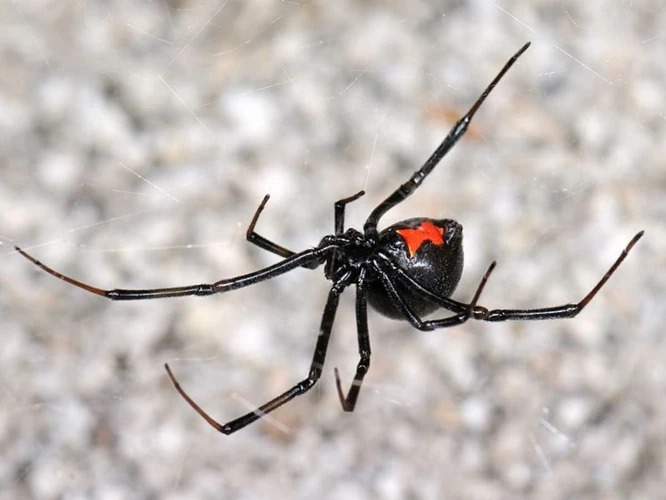Introduction
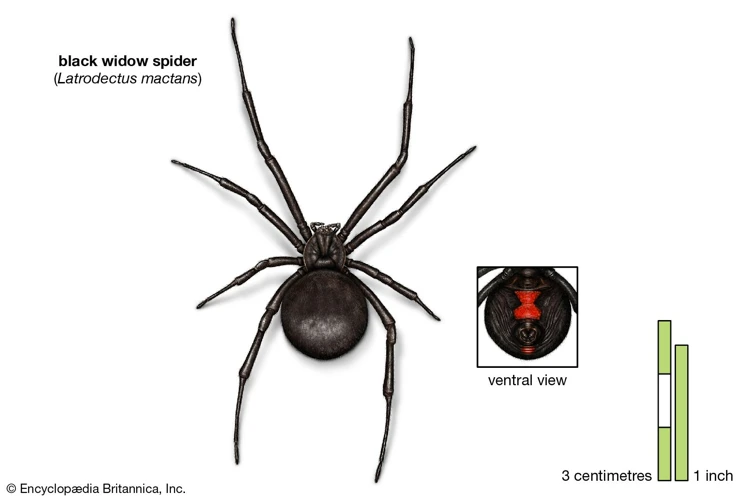
Undoubtedly, black widow spiders are amongst the most feared household pests around the world, known for their venomous bites that can cause serious health problems. Being able to identify potential entry points for these spiders and taking necessary measures to prevent them from invading your living space is of utmost importance. In this article, we will guide you through the step-by-step process of identifying entry points for black widow spiders and sealing them off effectively. Additionally, we will discuss some additional prevention measures that you can take to keep your home spider-free. So, let’s dive right in and explore the world of black widow spiders!
The Importance of Identifying Entry Points
Identifying entry points for black widow spiders is crucial in preventing infestations. These spiders are known for their venomous bites, which can be harmful to humans and pets. In order to protect your home and family, it’s important to proactively search for potential entry points where these spiders may gain access. By conducting a thorough inspection of your property, you can identify and address any openings before they become a problem. But why is it so important to identify entry points for black widows?
- Prevention is Key: Identifying and sealing entry points can prevent black widow spiders from getting into your home in the first place. This can save you time, money, and stress down the line by avoiding a potential infestation.
- Protect Your Health and Safety: Black widow spider bites can be dangerous, especially for children and seniors. By preventing these spiders from entering your home, you can help safeguard the health and safety of your family.
- Avoid Structural Damage: Left unchecked, black widow spiders can create webs and nests in hard-to-reach areas of your home. This can lead to structural damage over time, particularly if the spiders are nesting in areas like your attic or walls.
Identifying entry points for black widow spiders is an important first step in keeping your home and family safe. By taking the time to inspect and seal potential entry points, you can create a more secure living environment for everyone. For more information on specific methods for sealing entry points, check out our article on the benefits of sealing cracks for black widow elimination.
Common Entry Points for Black Widow Spiders
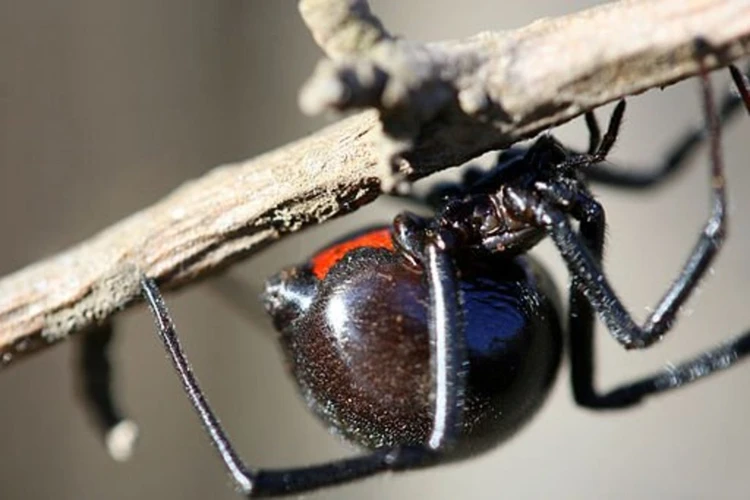
Identifying where black widow spiders are most likely to enter your home is crucial in preventing their presence. While these spiders can be found in many different areas, there are specific entry points that they tend to favor. It is important to be aware of these common entry points so that you can take the necessary precautions to keep black widows out. By doing so, you can minimize the risk of bites and ensure a safer living environment for you and your family. Let’s take a closer look at some of the common entry points for black widow spiders and what you can do to seal them off. To learn more about how to prevent black widow spiders, read our article on sealing gaps in windows and doors.
Cracks and Gaps in Walls and Windows
When it comes to black widow spiders, one common way they gain entry to your home is through cracks and gaps in walls and windows. These small openings provide the perfect opportunity for these dangerous spiders to crawl into your home undetected. It is important to regularly check for cracks and gaps to prevent black widow spiders from entering.
Here are some tips to help you identify and seal off any cracks and gaps in walls and windows:
- Take a walk around your home’s exterior with a flashlight and look for any cracks or gaps in the walls.
- Check windows for gaps in the caulk and gaps between the window frame and the wall.
- If you find any cracks or gaps, either hire a professional or take care of the problem yourself. There are many DIY methods available that can be found online or in hardware stores.
Sealing cracks and gaps around your home is an important step in preventing black widow spiders from making their way inside. By doing so, you’ll be able to keep your home safe and spider-free. Additionally, sealing cracks and gaps will also help to keep your home adequately insulated which can lead to energy savings in the long run.
If you need help with sealing cracks and gaps around your home, be sure to hire a professional. They will be able to identify any hidden areas that need to be addressed and provide expert guidance on how to seal them.
For more information on sealing outdoor cracks and gaps to help prevent black widows, see our guide on sealing outdoor cracks and gaps to prevent black widows.
Exterior Doors
Exterior doors can also be a common entry point for black widow spiders. The gaps between the door and the threshold should be checked to ensure that spiders cannot easily slip inside. This is especially important for doors that are frequently opened and closed, as they can create a draft that allows spiders to enter easily.
One prevention measure is to install door sweeps and weather stripping. Door sweeps are attached to the bottom of the door, creating a seal that closes the gap between the threshold and the door itself. Weather stripping can be applied around the door’s perimeter to further block entry points.
Another option is to seal any cracks or gaps around the door frame using caulk. Caulk can be used to seal gaps between the frame and the wall or between the frame and the door itself. This will make it much more difficult for spiders to find a way inside.
To ensure that there are no missed spots, it is essential to conduct a thorough inspection of all exterior doors around the home. Use an air sealant or expanding foam to seal any gaps around electrical outlets or light fixtures near the doors. Additionally, vent openings should be screened to help prevent spiders from using them as an entry point.
Consider implementing additional prevention measures such as regular pest control treatments and keeping a clean and tidy home. These measures can help keep black widow spiders at bay and reduce the risk of infestation.
For more information on how to seal cracks and avoid black widow spiders, check out our article on sealing cracks to avoid black widows.
Ventilation and Plumbing Pipes
When it comes to identifying entry points for black widow spiders, ventilation and plumbing pipes are often overlooked. These openings are especially attractive to spiders because they provide a direct pathway into your home while also providing moisture and humidity.
Common areas to check for entry points around ventilation and plumbing pipes include:
- Around dryer vents and bathroom exhaust fans
- Where pipes enter and exit the home
- Around gaps in the foundation where pipes penetrate through walls
It’s important to note that these entry points can be difficult to seal off completely. However, there are some measures you can take to reduce the likelihood of black widows entering your home.
Here are some steps to take:
- Inspect these areas regularly and look for cracks or gaps where spiders can enter.
- Seal any visible cracks or gaps with an appropriate sealant, such as caulk or foam.
- For larger gaps, consider using wire mesh or steel wool to seal off the opening before applying sealant.
- Install vent covers over all exterior vents, including your dryer vent and any vents for your heating and air conditioning system.
While sealing off entry points around ventilation and plumbing pipes can be time-consuming, it’s an important step to take in keeping your home spider-free. Taking preventative measures and addressing any potential entry points can go a long way in keeping your home safe and comfortable.
Internal Link: For more information on sealing cracks to prevent black widow spiders, check out our article on black widow spider sealing cracks.
Checking for Entry Points
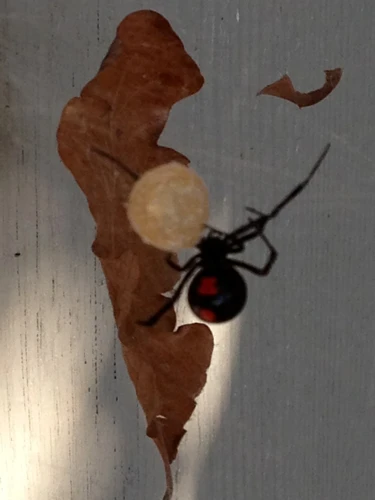
As we have established how crucial it is to identify potential entry points for black widow spiders, it’s time to move onto the next step – checking for these entry points. Checking for entry points is often the first step in a comprehensive spider control program. By doing so, you can pinpoint areas where there may be holes, cracks, and gaps that spiders can access. This step should be conducted both indoors and outdoors, as black widow spiders can travel inside your house through various means. Let’s dive into the details of checking for entry points and how to make sure your home is thoroughly inspected and protected from black widow spiders.
During the inspection process, you may find various entry points that require your attention. These may include cracks and gaps in walls and windows, exterior doors, ventilation, and plumbing pipes. To ensure you have a comprehensive understanding of potential entry points for black widow spiders, let’s take a closer look at each.
Note: To properly seal off these entry points, you can follow the guide we provided in our previous article on sealing attic cracks to block black widows or our article on caulking for spider prevention.
Conducting a Thorough Inspection
When it comes to identifying potential entry points for black widow spiders, conducting a thorough inspection of your property is crucial in order to locate any cracks or gaps. It is recommended to begin your inspection both indoors and outdoors, making sure to take your time and pay attention to detail.
Indoors, start with the attic, basement, and any crawl spaces, as these are common areas where spiders can enter. Look for any gaps around cables, pipes, electrical outlets, and vents. Use a flashlight to help identify any potential hiding spots.
Outdoors, inspect the exterior of your home, starting with the foundation. Check for cracks in the siding, gaps around utility lines, and entry points around doors and windows. Black widow spiders are also known to hide in woodpiles and debris, so make sure to clear any clutter away from the house.
- Inspecting the attic, basement, and crawl spaces of your home
- Looking for gaps around cables, pipes, electrical outlets, and vents
- Checking the exterior of your home for cracks, gaps, and entry points
- Clearing any clutter away from the house
By thoroughly inspecting your property, you can identify any areas where spiders may be entering. Once you have identified these potential entry points, you can take steps to seal them off and prevent spiders from entering your home. For example, you can seal electrical outlets using the tips found at /seal-electrical-outlets-from-spiders/ or air seal your home to prevent black widow spiders using the tips found at /air-sealing-home-black-widow-spiders/. Additionally, you may want to take a look at /preventing-black-widows-cracks-siding/ for other ways to prevent black widow spiders from entering your home.
Identifying Potential Entry Points Indoors and Outdoors
Identifying potential entry points for Black Widow Spiders can be challenging, but it is essential to keep your home safe from these dangerous spiders. It is crucial to inspect both indoor and outdoor areas thoroughly. The following table outlines common entry points and what to look for when identifying them:
| Entry Points | What to Look For |
|---|---|
| Doors | Check for gaps between the door and the frame that could allow spiders to enter. |
| Windows | Inspect window screens for tears or holes that spiders could use to get inside the house. Look for gaps around the window frame and seal them with weather stripping or caulk. |
| Ventilation and Plumbing Pipes | Check to make sure that all vents and pipes are tightly sealed. Use caulk or expanding foam to seal any gaps or holes around them. |
| Outdoor Debris | Remove any debris, such as piles of wood or leaves, from around the outside of your home. These items can provide shelter for spiders. |
| Outdoor Lights | Check outdoor lights for spider webs. Spiders might be attracted to the light, so it’s essential to keep these areas clean. |
| Garage and Attic | Inspect these areas for clutter and debris that could provide shelter for spiders. Make sure to seal any gaps or holes in the walls or ceilings. |
By identifying and sealing these potential entry points, you can make your home less attractive to Black Widow Spiders and reduce the risk of an infestation.
Sealing Off Entry Points
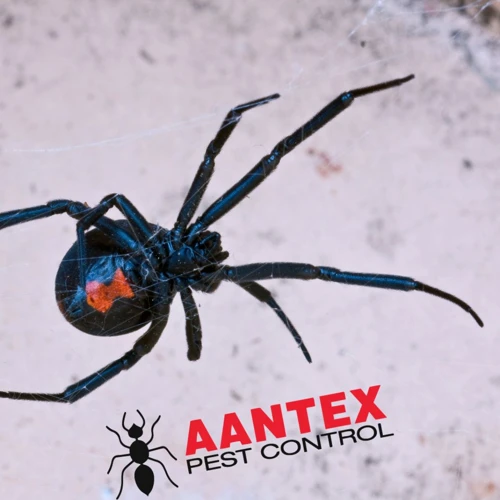
As soon as you’ve identified the potential entry points for black widow spiders in your home, it’s important to take action and seal them off. Ensuring that these entryways are closed can help prevent these arachnids from gaining access to your property in the first place, ultimately reducing the chances of encountering them indoors. With a variety of techniques available, such as sealing cracks and gaps and installing weather stripping, there are numerous ways to effectively seal off entry points and protect your home. Let’s delve deeper into some effective strategies for keeping black widow spiders out of your living space.
Sealing Cracks and Gaps in Walls and Windows
One of the most effective ways to prevent black widow spiders from entering your home is to seal off all potential entry points, particularly cracks and gaps in walls and windows. These small openings may seem insignificant, but they are the primary way that these spiders gain entry indoors. By regularly inspecting your home and sealing any gaps, you can protect your family from dangerous spider bites.
Identifying Cracks and Gaps
The first step to sealing off entry points for black widow spiders is to identify where they may be gaining entry. Check the exterior of your home for any cracks or gaps in the foundation, walls, or around windows and doors. Common areas where these gaps can be found may include:
| Location | Possible Gaps/Cracks |
|---|---|
| Foundation | Small cracks in cement |
| Walls | Spaces around pipes, wires, and vents |
| Windows/Doors | Separation between window frames and walls, gaps around door frames or beneath doors |
Once you have identified these areas, use a flashlight and a small mirror to inspect the inside of your home for potential entry points. Pay close attention to areas around pipes and vents that pass through walls, since these are common entry points for black widow spiders.
Sealing Cracks and Gaps
Once you have identified all potential entry points, take measures to seal these gaps effectively. Use caulk to seal small cracks in walls or floors, making sure to focus on areas around pipes and vents. Use weatherstripping or door sweeps to seal gaps around exterior doors, and replace any damaged window frames to prevent spiders from entering through gaps. Applying weather-resistant sealant around windows and doors can also help to prevent new entry points from forming.
Remember, while it is important to seal any existing gaps or cracks in your home’s exterior, it is also important to continue to inspect your home regularly to ensure that new entry points have not formed. By taking the necessary preventive measures, you can enjoy a pest-free home without the fear of black widow spiders.
Installing Door Sweeps and Weather Stripping
When it comes to keeping black widow spiders out of your home, one key step is to ensure that they cannot enter through your exterior doors. Installing door sweeps and weather stripping is an effective way to seal off any gaps or openings that might allow these spiders or other insects to enter your home.
What are Door Sweeps and Weather Stripping?
Door sweeps are typically made of flexible materials such as rubber or vinyl, and attach to the bottom of your door. They create a tight seal between the door and the floor, preventing spiders, insects, and other pests from crawling under the door and into your home.
Weather stripping, on the other hand, is used to seal gaps around the sides and top of your door. It is typically made of materials such as felt, foam, or vinyl, and can be attached using adhesive strips or nails. Weather stripping prevents drafts, improves energy efficiency, and keeps pests out of your home.
How to Install Door Sweeps and Weather Stripping
1. Measure the door: Before purchasing door sweeps and weather stripping, measure the length and width of your door to ensure that you select the correct size.
2. Clean the door: Remove any dirt or debris from around the door frame to ensure that the door sweeps and weatherstripping will adhere properly.
3. Install the door sweeps: Measure and cut the door sweep to the correct length, and attach it to the bottom of your door using screws or an adhesive. Make sure that the sweep creates a tight seal with the floor.
4. Attach the weather stripping: Measure and cut the weather stripping to fit around the sides and top of your door. Attach it using adhesive strips or nails, making sure to create a tight seal and minimize any gaps.
Tips for Effective Door Sweep and Weather Stripping Installation
– When installing door sweeps and weather stripping, take your time to ensure a proper fit and seal.
– Be sure to measure carefully and select the correct size of door sweep and weather stripping.
– Be sure to clean the door frame thoroughly before attaching the door sweep and weather stripping.
– Consider hiring a professional to install your door sweeps and weather stripping if you are unsure how to do it yourself.
By installing door sweeps and weather stripping around your exterior doors, you can help prevent black widow spiders and other pests from entering your home. These simple but effective measures can go a long way in keeping your home safe and spider-free.
Using Caulk to Seal Pipes and Vents
When it comes to using caulk to seal pipes and vents, there are a few key steps to keep in mind. First, it’s important to identify any pipes or vents that may be providing entry points for black widow spiders. These can include air conditioning vents, dryer vents, and plumbing pipes.
Once you’ve identified the pipes and vents that need to be sealed, the next step is to gather the necessary materials. This will typically include a caulk gun, caulk, a putty knife, and a utility knife.
The following table outlines the steps to properly use caulk to seal pipes and vents:
| Step | Description |
|---|---|
| 1 | Clean the area around the pipe or vent thoroughly to ensure there is no debris or dirt present. |
| 2 | Load your caulk gun with the appropriate type of caulk for the job. Silicone caulk is often a good choice for sealing pipes and vents. |
| 3 | Apply the caulk around the perimeter of the pipe or vent, making sure to create a continuous and even line. Use a putty knife to smooth out the caulk and ensure it is evenly distributed. |
| 4 | Allow the caulk to fully dry and cure before using the pipe or vent again. This may take several hours or even overnight. |
| 5 | Use a utility knife to carefully trim away any excess caulk, creating a clean and neat seal. |
By following these steps and using caulk to seal pipes and vents, you can effectively prevent black widow spiders from using these areas as entry points into your home. This, in turn, can help to keep you and your family safe from these potentially dangerous spiders.
Additional Prevention Measures
As important as it is to identify and seal off entry points for black widow spiders, prevention is always better than cure. By taking additional prevention measures, you can significantly reduce the chances of black widow spiders making a home in your property. Let’s take a closer look at some effective prevention measures you can take to keep these venomous spiders away. From keeping your home clean to regular pest control treatment, these measures will ensure your safety and peace of mind.
Keeping a Clean and Tidy Home
Maintaining a clean and tidy home is an important step in preventing black widow spiders from entering your living space. These spiders are often attracted to cluttered and messy areas where they can hide and build their webs. By keeping your home free of debris, you can reduce their potential hiding spots and make it easier to spot any potential entry points. The following table outlines some tips for keeping a clean and tidy home:
| Tips for a Clean and Tidy Home: | Explanation: |
|---|---|
| Declutter regularly | Get rid of unnecessary items in your home that could provide hiding spots for black widow spiders. |
| Vacuum frequently | Vacuuming helps to eliminate spider webs and other debris that could attract black widow spiders. |
| Store items in sealed containers | Storing items in sealed containers makes it difficult for black widow spiders to make their homes there. |
| Eliminate clutter in outdoor areas | Outdoor clutter can attract black widow spiders, so keeping your outdoor areas free of clutter helps to prevent them from making their way inside your home. |
| Keep a tidy kitchen | Black widow spiders are attracted to crumbs and other food debris, so keeping your kitchen clean and tidy can help to prevent them from invading your home. |
By following these tips and maintaining a clean and tidy home, you can reduce the likelihood of black widow spiders from entering your living spaces. This, in turn, reduces the risk of potential spider bites and harm to you or your loved ones.
Regular Pest Control Treatment
Regular Pest Control Treatment
One of the most effective ways to prevent black widow spiders from entering your home is to schedule regular pest control treatments with a licensed professional. These treatments can help to eliminate any existing spider populations and prevent new spiders from entering your home.
During a pest control treatment, a licensed professional will inspect your home for any signs of spider activity and will use appropriate pesticides and insecticides to eliminate any existing spiders and their nests. They may also provide recommendations for sealing off any potential entry points to prevent future infestations.
It’s important to note that while DIY pest control methods may seem like a cost-effective solution, they may not be as effective as a professional treatment. Additionally, improper use of pesticides and insecticides can be dangerous to both people and pets.
Here’s a table summarizing the pros and cons of DIY pest control methods versus professional pest control treatments:
| DIY Pest Control | Professional Pest Control |
|---|---|
| Pros: cheaper than professional treatment | Pros: experienced professionals, effective elimination of pests |
| Cons: may not be as effective, potential for the improper use of pesticides, can be time-consuming and labor-intensive | Cons: more expensive than DIY methods |
Ultimately, investing in regular professional pest control treatments can save you time and money in the long run by preventing infestations and protecting the health and safety of your family and pets.
Conclusion
In conclusion, identifying and sealing off potential entry points for black widow spiders is crucial in preventing an infestation. These spiders are known for their venomous bites, which can be dangerous to both humans and pets. By taking the time to inspect for cracks and gaps in walls and windows, exterior doors, and ventilation and plumbing pipes, you can eliminate the entryways these spiders use to enter your home.
Furthermore, sealing off these entry points with caulking, door sweeps, weather stripping, and other materials can provide an extra layer of protection against pests. Additionally, maintaining a clean and tidy home, and regularly scheduling pest control treatments can further decrease the likelihood of an infestation.
It’s important to note that black widow spiders are not the only pests that can enter your home through these entry points. Rodents, other spider species, and insects can also use these openings to gain access to your living space. So, by taking steps to prevent black widow spiders, you are also making your home less attractive to other unwanted pests.
In summary, if you want to keep your home safe from black widow spiders and other pests, a proactive approach to preventing entry points is key. By taking these simple measures, you can protect yourself, your family, and your home from potential harm.
Frequently Asked Questions
1. Can black widow spiders enter homes through open windows?
Yes, open windows with damaged screens can provide an entry point for black widow spiders. It is important to ensure all windows are properly screened and sealed.
2. What are some signs that black widow spiders are present in my home?
If you notice webs that are irregularly shaped and have a tangled appearance, or if you spot a black spider with a distinctive hourglass marking on its abdomen, you may have a black widow spider infestation.
3. How can I conduct a thorough inspection for spider entry points?
Take a flashlight and carefully examine the interior and exterior of your home, paying close attention to areas where plumbing, electrical, and ventilation systems enter. Look for cracks, gaps, and holes that could allow spiders to enter.
4. Can caulking around pipes and vents help prevent black widow spiders from entering my home?
Yes, caulking around pipes and vents can help create a barrier that prevents spiders from entering your home.
5. How often should I conduct a spider inspection?
You should conduct a spider inspection at least once a year. However, if you live in an area with a high prevalence of black widow spiders, you may need to perform inspections more frequently.
6. Can black widow spiders be killed with insecticides?
Yes, insecticides can be effective at killing black widow spiders. However, it is important to follow proper safety protocols when applying these chemicals.
7. Should I attempt to remove black widow spider webs myself?
No, attempting to remove black widow spider webs yourself can be dangerous. It is recommended to contact a professional pest control expert to address the infestation.
8. Can outdoor lighting attract black widow spiders?
Yes, outdoor lighting can attract insects, which in turn can attract black widow spiders. Consider using yellow or insect-resistant bulbs to minimize insect activity.
9. How can I prevent black widow spiders from hiding in cluttered areas?
Keep storage areas like basements and attics clean and organized. Store items in sealed containers and avoid leaving clutter on the floor.
10. Can black widow spiders be found in areas without a warm climate?
Yes, black widow spiders have a wide distribution and can thrive in various climates. However, they are more commonly found in warmer areas.

